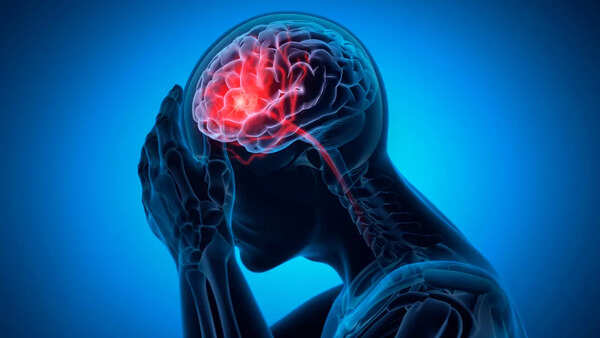Is there a neurological basis for criminal behavior? A groundbreaking study suggests a potential link between brain injury and the emergence of criminal tendencies. Researchers have identified a specific brain pathway, the uncinate fasciculus, as potentially crucial in regulating behavior and moral decision-making.

Brain imaging highlights a pathway possibly related to violent tendencies.
The study, conducted by researchers at the University of Colorado Anschutz Medical Campus, Brigham and Women’s Hospital, and Harvard Medical School, sheds new light on the neurological roots of violence and moral decision-making. Their findings were published in Molecular Psychiatry.
To investigate the link between brain injury and criminal behavior, researchers analyzed brain scans of individuals who began engaging in criminal activities after suffering brain injuries from strokes, tumors, or traumatic brain injuries. They compared these scans with those of 706 individuals exhibiting other neurological symptoms like memory loss or depression.
The results revealed a striking correlation: injury to a specific brain pathway on the right side of the brain, known as the uncinate fasciculus, was frequently observed in individuals exhibiting criminal behavior. This pattern was also evident in those who committed violent crimes.
“This part of the brain, the uncinate fasciculus, is a white matter pathway that serves as a cable connecting regions that govern emotion and decision-making. When that connection is disrupted on the right side, a person’s ability to regulate emotions and make moral choices may be severely impaired,” explained Christopher M. Filley, MD, professor emeritus of neurology at the University of Colorado School of Medicine and co-author of the study.
Isaiah Kletenik, MD, assistant professor of neurology at Harvard Medical School and lead author of the study, added, “While it is widely accepted that brain injury can lead to problems with memory or motor function, the role of the brain in guiding social behaviors like criminality is more controversial. It raises complex questions about culpability and free will."

A detailed illustration showcasing the uncinate fasciculus and its importance.
Kletenik shared that his experience evaluating patients who began committing violent acts due to brain tumors or degenerative diseases sparked his interest in the brain basis of moral decision-making.
To further validate their findings, the researchers conducted a comprehensive connectome analysis, utilizing a detailed map of the interconnections between brain regions. This analysis confirmed that the right uncinate fasciculus was the neural pathway most consistently linked to criminal behavior.
“It wasn’t just any brain damage; it was damage in the location of this pathway. Our finding suggests that this specific connection may play a unique role in regulating behaviour,” Filley emphasized.
The uncinate fasciculus connects brain regions associated with reward-based decision-making and those responsible for processing emotions. Damage to this pathway, particularly on the right side, can impair impulse control, the ability to anticipate consequences, and empathy, potentially contributing to harmful or criminal actions.

A general depiction of a human brain.
The researchers emphasize that not everyone with this type of brain injury will become violent. However, damage to this pathway may contribute to the new onset of criminal behavior following an injury.
“This work could have real-world implications for both medicine and the law. Doctors may be able to better identify at-risk patients and offer effective early interventions. And courts might need to consider brain damage when evaluating criminal responsibility,” Filley stated.
Kletenik also pointed out the crucial ethical questions raised by the study's findings. “Should brain injury factor into how we judge criminal behavior? Causality in science is not defined in the same way as culpability in the eyes of the law. Still, our findings provide useful data that can help inform this discussion and contribute to our growing knowledge about how social behavior is mediated by the brain,” Kletenik concluded.
Newer articles
Older articles
 Jannat Zubair Reveals "Biggest Regret" After "The Traitors" Elimination; Finale Looms
Jannat Zubair Reveals "Biggest Regret" After "The Traitors" Elimination; Finale Looms
 Beyond the Blood Test: 5 Subtle Signals of Prediabetes You Shouldn't Ignore
Beyond the Blood Test: 5 Subtle Signals of Prediabetes You Shouldn't Ignore
 Gambhir Defends India's Tailenders Despite Costly Batting Collapses in England Test Loss
Gambhir Defends India's Tailenders Despite Costly Batting Collapses in England Test Loss
 Najmul Hossain Resigns as Bangladesh Test Captain After Sri Lanka Defeat
Najmul Hossain Resigns as Bangladesh Test Captain After Sri Lanka Defeat
 FIFA Club World Cup 2025: Upsets, Messi Magic, and 2026 World Cup Concerns Emerge From Group Stage
FIFA Club World Cup 2025: Upsets, Messi Magic, and 2026 World Cup Concerns Emerge From Group Stage
 West Indies Coach Daren Sammy Fined, Receives Demerit Point for Umpire Criticism
West Indies Coach Daren Sammy Fined, Receives Demerit Point for Umpire Criticism
 Wimbledon's All-White Dress Code: The History, Controversies, and Evolving Rules
Wimbledon's All-White Dress Code: The History, Controversies, and Evolving Rules
 Samsung Galaxy A35 5G and A55 5G: Official Pricing and Availability Announced
Samsung Galaxy A35 5G and A55 5G: Official Pricing and Availability Announced
 Colon Cancer: Don't Ignore These 5 Early Warning Signs
Colon Cancer: Don't Ignore These 5 Early Warning Signs
 Prada Admits Kolhapuri Chappal Influence in New Sandal Design After Criticism
Prada Admits Kolhapuri Chappal Influence in New Sandal Design After Criticism